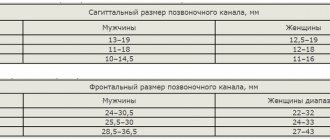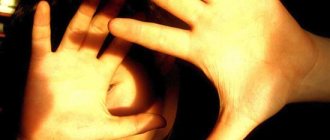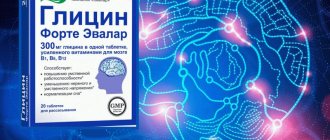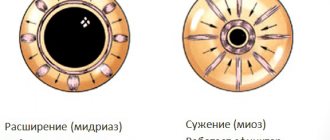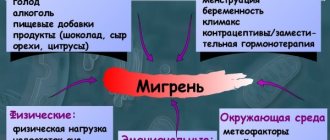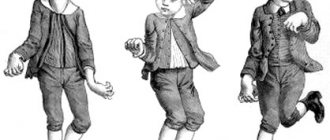Intracranial hypertension is a pathology of the brain area, characteristic of a large number of different diseases and injuries. The clinical manifestation of intracranial hypertension syndrome is an increase in intracranial pressure, which can occur due to an increase in the amount of cerebrospinal fluid or tissue fluids of the brain, the occurrence of hematomas and tumors, and stagnation of blood in the blood vessels.
The causes of intracranial hypertension are varied: from mechanical head injuries to diseases associated with various parts of the brain. Even simple poisoning or alcohol intoxication can cause hypertension.
The question often arises: do people with intracranial hypertension take part in the army? No, they won’t take it, because this is a pathology of intracranial pressure. Brain activity during illness decreases significantly, which affects a person’s overall performance.
The big picture
Intracranial hypertension and the causes of its occurrence are always closely related to possible symptoms. Depending on the root cause, doctors prescribe specialized treatment based on the diagnostic results and the patient’s personal characteristics of the disease.
Increased intracranial pressure is quite common in the modern world, as people often suffer various injuries associated with active recreation and entertainment. Do not panic when you discover this disease, because it is not so difficult to treat if measures are taken in a timely manner.
Treatment of intracranial hypertension is well developed and there are many different techniques:
- drug treatment;
- treatment with surgical intervention;
- medicinal-mechanical treatment, combining the first two methods.
Intracranial hypertension and its treatment have been well studied by various specialists; methods of combating any manifestations have been worked out to an almost ideal state. There is an unofficial international classification of types of disease:
- venous intracranial hypertension;
- post-traumatic hypertension;
- benign intracranial hypertension;
- ICH diseases.
The normal intracranial pressure for the average person is within 52 cmH2O or 18 mmHg. Critical manifestations occur when this value increases to the upper mark of 78 cmH2O.
In childhood, the syndrome occurs quite often, and in adults, hypertension usually affects men.
In adolescence, idiopathic intracranial hypertension occurs, more often affecting children with excess body weight.
Benign intracranial hypertension: symptoms, treatment, prognosis
Benign intracranial hypertension is a pathological syndrome in which there is an increase in pressure inside the skull. This condition is also called pseudotumor cerebri. It is not associated with impaired blood circulation in the vessels of the brain or the presence of tumors in it.
General characteristics of the pathology
Benign, or idiopathic, intracranial hypertension is not an independent diagnosis. This is a condition that is caused by certain unfavorable factors that are temporary.
Most often, pseudotumor cerebri is detected in women who are overweight, as well as in children with iron deficiency anemia. The overall prevalence of this pathology is 6% among all cases of intracranial hypertension.
The syndrome is characterized by an increase in cerebrospinal fluid pressure, due to which the latter cannot circulate freely and accumulates between the ventricles and the membranes of the brain.
The distinctive features of this condition are:
- relative ease of flow;
- no risk of developing dangerous and serious complications;
- the absence of such manifestations characteristic of hypertension as impaired consciousness and decreased ability to work.
Idiopathic intracranial hypertension occurs abruptly: it is usually not preceded by specific precipitating events.
Causes
An increase in pressure inside the skull of a benign nature is not associated with contact damage to parts of the brain or the presence of space-occupying tumors in this area. Impaired blood circulation in the vessels of the brain also does not cause hypertension.
The development of idiopathic intracranial hypertension is associated with factors such as:
- overweight;
- menstrual irregularities;
- pregnancy period;
- Iron-deficiency anemia;
- excessive consumption of synthetic analogues of vitamin A;
- taking tetracycline antibiotics, corticosteroids, hormonal contraceptives: in this case, increased intracranial pressure is a side effect of taking these drugs;
- deficiency of thyroid hormones;
- heavy metal poisoning (for example, lead);
- parasitic infections (trypanosomiasis);
- hemophilia;
- venous sinus thrombosis;
- leukemia;
- systemic lupus erythematosus.
In children, the syndrome occurs as a result of birth injuries, damage to the central nervous system, bacterial or viral infections that affect the brain.
In approximately half of all cases of fixation of intracranial benign hypertension, the true cause of this phenomenon cannot be established, therefore it is regarded as idiopathic.
An increase in intracranial pressure not associated with the development of a tumor is expressed in the following symptoms:
- Cephalgia. Initially, the headache is mild and can be relieved with analgesics. Gradually, the intensity of cephalalgia increases, the pain acquires a bursting character and becomes widespread. The greatest severity of pain is in the forehead area. Increased cephalalgia is observed at night or in the morning, immediately after waking up. The intensity also increases when you tilt your head, sneeze or cough.
- Increased sensitivity to changes in weather conditions.
- Pain in the post-ocular area.
- Difficulty and pain when moving the eyes.
- Pulsating noise in the ears. Usually it coincides with the frequency of contractions of the heart muscle.
- Decreased libido.
- Visual impairment: weakened visual acuity, blurred vision.
In childhood, the pathology manifests itself in the following symptoms:
- headache in the morning;
- bulging fontanelle;
- visually noticeable increase in the gap between the seams of the skull;
- fast fatiguability;
- frequent profuse regurgitation “fountain”;
- bruises under the eyes;
- at an older age – concentration problems, poor ability to remember information.
The appearance of idiopathic intracranial hypertension is a sign of any abnormalities in the body. To identify their cause, a number of diagnostic measures are carried out.
Diagnostics
To make a diagnosis, the following measures are prescribed:
- MRI or CT scan of the brain;
- fundus examination;
- general clinical tests;
- echoencephalography;
- Doppler ultrasound of head and neck vessels;
- collection and examination of cerebrospinal fluid;
- neurosonography (for infants).
Additional diagnostic methods may require consultation with specialists such as an endocrinologist, cardiologist, or psychotherapist.
Differentiation methods are also used during diagnosis. Thus, intracranial benign hypertension is distinguished from brain abscess, meningitis and encephalitis, and dural sinus thrombosis.
Treatment options
The main goals of treatment are to eliminate the provoking factor and symptoms of the deviation.
Conservative therapy
During therapy, diuretics (Furosemide, Diacarb) are used. If these drugs do not give the desired result, Dexamethasone is added. The dosage is determined by the attending physician.
Also, with idiopathic intracranial hypertension syndrome, it is necessary to follow a special diet, limiting salt and fluid intake.
Patients can eat:
- vegetable soups with added cereals;
- baked or boiled vegetables, with the exception of green peas and cabbage;
- any cereal side dishes cooked in water or milk;
- lean fish and meat, which during the cooking process must first be boiled and then fried or baked;
- pasta;
- vegetable and butter;
- dairy products, with the exception of cream, cheese and sour cream;
- ripe fresh berries and fruits;
- dried fruits.
You can drink fruit and vegetable juices, weak coffee with milk, weak tea, and rosehip decoction.
In addition to salt and large amounts of liquid, people with idiopathic intracranial hypertension are prohibited from consuming alcohol, chocolate, canned and pickled foods, baked goods, and legumes.
Surgery
Surgical treatment of the syndrome is carried out only if conservative therapy methods do not produce results, as well as if there is a threat of vision loss.
Under these conditions the following are indicated:
- Lumbar punctures. Such procedures can be repeated several times. At one time, 30 ml of cerebrospinal fluid is collected. Lumbar punctures are performed every other day until a satisfactory pressure reading is achieved. In the future, the procedure is carried out once a week.
- Shunt operations. Such manipulations make it possible to reduce pressure levels throughout the arachnoid space of the brain. In this case, excess cerebrospinal fluid is drained either into the abdominal cavity or into the right atrium. Shunt surgery is performed in this way: a catheter is installed through a hole in the skull, one end of which is immersed in the ventricle of the brain, and the other is brought out. A system of tubes and valves is installed under the skin, through which the cerebrospinal fluid will be drained. The outlet end is secured either in the abdominal cavity or in the right atrium. Carrying out such an operation for benign intracranial hypertension is complicated by the fact that the ventricles are often narrowed in this syndrome. Radical shunting measures are fraught with infection and clogging of the shunt.
- Decompression of the optic nerve sheaths. This event is carried out if there is a threat of complete loss of vision by the patient. Surgical intervention is indicated when the visual field narrowing progresses.
For intracranial hypertension of unknown origin, it is not recommended to treat yourself. Traditional methods of therapy can be used only after consultation with a doctor and exclusively with his consent.
The following methods help with the described syndrome:
- Inhalations. You need to pour hot water into 20 bay leaves, bend over the container and inhale the emanating steam for 20 minutes.
- Compresses. It is recommended to rub a mixture of 50 ml of camphor oil and medical alcohol into the scalp. You can leave the compress on for several hours or overnight. This method will help relieve severe headaches. To enhance the effect of the compress, you can wrap your head in a plastic bag and tie a woolen scarf or handkerchief on top.
- Tincture of honey and onion juice. You need to prepare 3 kg of onions, peel them, grind them through a meat grinder or process them using a juicer. Mix the resulting volume of juice with 0.5 kg of natural honey. Add 25 internal walnut partitions to this mixture. Pour 0.5 liters of vodka into the mixture. The product needs to sit for 24 hours. You need to take it three times a day, a tablespoon at each dose.
- Raisin decoction. You need to take 100 g of dried fruits and pass through a meat grinder. Pour the ground raisins into 200 ml of hot water and boil over low heat for 10 minutes. After this, pour the finished product onto a sieve. Drink the decoction without pulp in equal parts three times a day.
- Lavender tincture. To prepare the product, pour a tablespoon of herb into 0.5 liters of hot water. Leave the liquid to sit in a warm place for 40 minutes. Take the prepared infusion one tablespoon three times a day. The course of treatment is a month;
- Viburnum decoction. 200 g of berries need to be brewed with 400 ml of boiling water. Cover the container with the composition with a lid and leave for half an hour. After this, strain the infusion, divide the resulting volume into three equal parts. Take with every meal.
- Clover infusion. Take a tablespoon of raw material, pour 500 ml of boiling water, pour into a jar and leave in a dark place for 2 weeks. Periodically, the container with the infusion needs to be shaken. When the product is ready, start taking it. Dosage – half a teaspoon three times a day. You need to be treated in this way for at least a month.
Traditional methods of treatment usually relieve the symptoms of the deviation, but do not eliminate its true cause.
Forecast
With a benign form of intracranial hypertension, the prognosis is more favorable and is characterized by fewer consequences than in the case of a malignant type of deviation.
The most common consequences of the syndrome that occur in the absence of therapeutic measures are:
- periodic headaches that affect general well-being;
- impairment of cognitive processes in childhood;
- decreased visual acuity.
The syndrome of idiopathic intracranial hypertension does not threaten the patient’s life and, with timely treatment, disappears without a trace.
Preventive measures include the following:
- medications should be taken only on the recommendation of a doctor and in the indicated dosage;
- constant monitoring of body weight indicators, prevention of obesity;
- contacting a specialist if there is a sudden change in general condition or deviations in health indicators.
The listed preventive measures cannot be called exhaustive: since in some cases the cause of the pathology cannot be determined, it is impossible to provide a complete list of factors that can provoke it.
Benign intracranial hypertension is a phenomenon not associated with the presence of a tumor in the brain or severe trauma. In some cases, the nature of this phenomenon cannot be established. Unlike the usual increase in intracranial pressure, benign hypertension is much milder and does not cause serious consequences.
Source: https://serdce.biz/zabolevaniya/ard/gipertoniya/dobrokachestvennaya-vnutricherepnaya-gipertenziya.html
Causes
The human brain is a complex structure protected from mechanical damage by the cranium. The cranial sinuses are filled with blood and cerebrospinal fluid, which further protect the brain.
Liquor constantly surrounds the brain tissue, being constantly in motion, regularly renewed and changing. In cases of excessive accumulation or problems with withdrawal, the appearance of hypertensive syndrome is possible.
Often, the causes of high cerebral pressure syndrome are various diseases, injuries, and a broken genetic code. The most common “provocateurs” of the disease:
- congenital hypertrophy of various areas of the brain;
- poisoning and intoxication of the body;
- sepsis and inflammatory processes;
- disorders in the blood circulation of the brain;
- diseases not related to the brain (lung diseases, heart diseases);
- various tumors;
- injuries (hematomas, bruises).
The most common syndrome of intracranial hypertension is disturbances in the circulation of cerebrospinal fluid and blood. Of course, there is also moderate intracranial hypertension, which occurs on its own and is not as pronounced as other types.
Diet
When intracranial hypertension occurs, it is important to provide appropriate conditions under which the body cannot accumulate fluid. For this purpose, adherence to a salt-free diet is mandatory. You need to exclude smoked and flour products from your usual diet. Smoking and consumption of alcoholic beverages is prohibited. It is best to refrain from consuming store-bought juices, fast foods, and sweet carbonated water.
Symptoms
Hypertensive syndrome has quite clear manifestations that are specific to various diseases. The main clinical symptoms are common to all types and are expressed as follows:
- frequent and severe headaches, especially in the afternoon;
- nausea, acute urge to vomit;
- fast fatiguability;
- high level of sensitivity to changes in atmospheric pressure;
- changes in blood pressure and irregular heartbeat;
- disturbances in the functioning of the organs of touch;
- nervous state.
The duration of symptoms varies depending on the underlying cause of intracranial hypertension. Ignoring the problem for a long time can cause disruption of the central nervous system, pathologies of different parts of the brain (especially the falx process), and irreversible changes in the blood vessels of the brain. The displacement of the brain regions relative to the transverse falciform process behind the main sulcus is also irreversible.
Surgical intervention
The indication for surgery is the lack of the required effect from conservative therapy, as well as a significant increase in blood pressure. To reduce these indicators, repeated lumbar punctures are performed. Initially, they are performed every other day, and then the collection is performed once a week.
Now in the arsenal of neurosurgeons there are many techniques for performing shunt operations that make it possible to achieve normalization of intracranial pressure. It happens that similar conditions occurring in the head lie in wait for pregnant women. Among the main symptoms of this problem is dizziness. However, while carrying a child, it is not recommended to use any aggressive methods of therapy, as this can provoke many complications.
Diagnostics
There are various methods for diagnosing hypertension. Benign intracranial hypertension is often expressed only by minor problems with the accumulation and removal of cerebrospinal fluid; other types should be examined more carefully. It is important to detect fluid-filled depressions in the brain, tumors, hematomas and other causes as soon as possible.
It is not possible to directly measure the pressure in the cranium, so a set of various studies is carried out. Basically, all diagnostic measures are divided into three types:
- external diagnostics;
- laboratory research;
- differential diagnosis.
The first type includes examination of the patient by an appropriate specialist, initial examinations using MRI without the use of contrast liquids, and an X-ray of the brain.
The second method consists of a puncture of spinal cord fluids, a general analysis of blood and lymphatic fluid, and involves laboratory testing of the cerebrospinal fluid for protein content and to exclude sarcoidosis.
The latter method examines the degree of damage to the central nervous system, the possibility of infectious diseases and metabolic pathologies in the human body. In addition, this approach includes analysis for toxic substances and examines the gene code for pathology.
Possible consequences
Prolonged course of intracranial hypertension can provoke quite dangerous consequences. In particular, the main complications include:
- cerebral ischemia;
- compression of brain structures;
- their displacement;
- death of the patient.
In addition, such a syndrome can lead to mental disorders, blindness, mental retardation, and paralysis. If conscripts have an illness, the military registration and enlistment office evaluates their health status based on the application of appropriate research methods. Cerebrospinal fluid pressure indicators are assessed, and an ophthalmologist's opinion is also required. However, if a conscript is recognized as fit for military service, then only with certain restrictions.
Any disturbances in the circulation of cerebrospinal fluid or blood circulation negatively affect human activity. Moderate hypertension can cause minor disturbances in brain function, but long-term disturbances can lead to soft tissue atrophy.
If you strictly follow all the doctor’s recommendations and follow the rules of a healthy lifestyle, hypertension can be quickly and effectively eliminated.
Treatment
It is necessary to carefully study the cause of intracranial hypertension before prescribing any treatment, because inappropriate measures can lead to a worsening of the condition. It is worth paying special attention to treatment, because hypertensive syndrome not only negatively affects the body with severe symptoms, but can also cause serious complications, including the possibility of death.
Considering all factors, treatment is very important for each type of hypertension. Depending on the cause, specialists prescribe each individual type of therapy aimed at combating a specific type of disease.
The primary task is dehydration of the body, for which glycerol is used. The main cause of increased intracranial pressure is high levels of brain fluid, and getting rid of its excess is important in treatment.
Very often, barbiturates and some types of diuretics are prescribed, such as dexamethasone, acetazolamide, furosemide and other specific drugs. Along with them, doctors prescribe a course of dehydrating drugs, including glycerol.
Along with drug treatment, surgical intervention is possible. True, surgical actions are carried out only in extreme cases, for example, when there is a threat of loss of vision, or if conservative therapy is powerless.
In addition, a special diet is recommended aimed at reducing body weight and fluid levels in the body. It involves limiting the amount of liquid consumed and, if possible, completely eliminating salt from the diet.
Application of conservative techniques
Treatment of intracranial hypertension should, first of all, be aimed at eliminating the main cause that provoked the formation of the syndrome. Pressure reduction is based on the following principles:
- normalization of intracranial processes;
- gradual transition to complex and aggressive correction;
- normalization of vascular function;
- impact on secondary factors of brain damage.
Before starting treatment for intracranial hypertension, it is imperative to classify the level of pressure increase. In general, this syndrome responds well to therapy. This condition is easily corrected by taking antioxidants and vitamins. In addition, mild diuretics may be used. For a long time, a drug such as Acetazolamide has given very good results. In some cases, Methylprednisolone and Dexamethasone are added to diuretics. Treatment is predominantly carried out on an outpatient basis and only in the most severe cases is hospitalization of the patient in a hospital indicated.
Severe intracranial hypertension is treated strictly under the supervision of a doctor in a specialized hospital. The pressure reduction occurs in stages. In this case, therapy is divided into preventive and emergency.
Preventive treatment includes the elimination of provoking factors that can accelerate or aggravate the development and course of the disease. To do this, the doctor makes adjustments:
- disturbances of venous outflow;
- hyperthermia;
- respiratory disorders;
- systemic hemodynamics.
In the absence of the required result of therapy, doctors resort to the use of emergency techniques. For this, a stepwise pressure reduction algorithm is used. Initially, a tomography is performed to eliminate the need for surgical intervention. If indicated, controlled cerebrospinal fluid discharge systems are used. Hyperventilation is also indicated.
The patient is administered hypersmolar solutions, in particular, drugs such as HyperHAES and Mannitol. If all these methods are ineffective, the patient is put into a medically induced coma. Artificial hypothermia is used, which will help reduce the temperature, normalize the metabolic processes of the nervous tissue, as well as cerebral circulation.
To eliminate painful sensations, it is enough just to lower the pressure. If necessary, a drug blockade is used. In addition, drugs are required to increase neural impulses.
To prevent relapses, patients should limit their water and salt intake. In addition, it is important to control weight and quit smoking and drinking alcohol. Mexidol can be taken as a medication.
Hypertension in childhood
Congenital intracranial hypertension in newborns is a consequence of developmental pathologies or disruption of the normal course of pregnancy. There is a high likelihood of this syndrome occurring in children who have suffered hypoxia during birth or intrauterine development. Doctors should be alert for signs such as:
- constant irritability and drowsiness;
- nausea and vomiting;
- increase in head size;
- convulsions;
- optic nerve atrophy;
- fontanelle tension;
- increased muscle tone.
If there are signs of intracranial hypertension in children, then you need to consult a doctor for a comprehensive study. He prescribes an ultrasound of the brain, since this is the only examination method in childhood.
Therapy for intracranial hypertension in children is aimed at eliminating the main symptoms of the disease, as well as removing excess fluid. If necessary, surgical treatment and drainage installation are performed to remove excess cerebrospinal fluid into the adjacent cavity.
Children with such a pathology must be observed by a neurologist so that, if necessary, appropriate treatment can be quickly started and the development of serious complications can be prevented. This syndrome may have minor manifestations, and then exacerbations are observed only during the course of influenza and ARVI. In other cases, increased pressure leads to compression of vital brain structures, which leads to paralysis and death.



